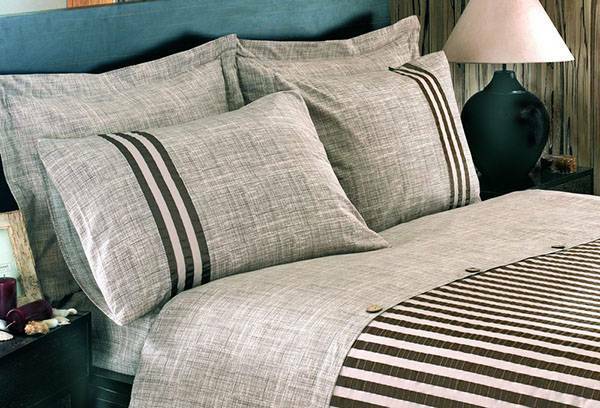Content:
- Advantages of ironing
- Minuses of ironing
- Obligatory ironing
- Rules for ironing bed linen
Every housewife should find out for herself whether to iron the bed linen and what benefit this procedure brings. Someone does this for aesthetics, because the ironed sheets give the bedroom a neat look. Someone is sure that ironing kills germs and reduces the risk of dermatological diseases. Some mistresses do this "out of habit", because that's what my grandmother and mother did.

Advantages of ironing
Home textiles, children's pajamas and night shirts are washed after washing for many reasons.
- The ironed sheets become softer that gives pleasant tactile sensations during the night rest. The exception are terry sheets: they become stiff and visually thinner.
- After the ironwork, the duvet covers, sheets and pillow cases become more compact, which helps to save space in the cabinet.
- The clean, ironed sheet looks more neat and aesthetically pleasing.
- After processing with an iron, the cotton fabric becomes more durable: the fibers "melt" and do not begin to be split shortly after purchase.
- Heat kills bedbug larvae, bacteria and microbes. The low wash temperature does not cope with this task.
Finding out why the housewives ironing pillowcases and sheets, you need to find out all about the shortcomings of this procedure.

Disadvantages of ironing
Despite the described advantages, some mistresses remain opponents of ironed bed linen, because they are sure that the procedure is useless. You need to know not only about the pros, but about the minuses of ironing.
- The pleasant aroma that remains on the sheets and pillow cases after rinsing with the addition of an air conditioner becomes less noticeable after ironing.
- The ironing of the entire set of bed linens takes a lot of time, physical effort and electricity.
- After ironing, the ability of the fabric to wet( hygroscopicity) is significantly reduced. This means that the ironed sheet absorbs moisture worse, which is released at night by a human body.
- Certain materials are electrified after iron treatment. This gives discomfort during a day or night sleep.

Mandatory ironing
The issue of ironing home textiles is acute:
- when a person with skin diseases is in the house;
- when you have a newborn baby.
Pediatricians tirelessly discuss the need for ironing children's clothes and underwear. People of the older generation who raised children without diapers and washing machines, are sure that we must always iron the diapers. However, in the modern world there are special powders for children's things, and the water in the typewriter heats up to 95 degrees. However, this may not be enough.
High temperature kills germs that are dangerous to the newborn. On his body is an unhealed wound from the umbilical cord, through which the infection can enter the body, so ironing diapers in the first weeks of life is necessary. In addition, jammed folds on the fabric, not felt by adults, can lead to irritation on the tender baby skin.
Advice
Ask your attending pediatrician about the need for ironing a newborn baby's linen.
Ironing sheets, pillowcases, duvet covers and towels are necessary during the treatment of skin diseases such as fungus, lichen, dermatitis. The standard temperature for washing cotton cloth is 60 degrees. This is enough to kill bacteria of colds and mites. In case of serious dermatological diseases a person should have a separate set of bed linen and individual towels that need to be ironed and steamed.

Rules for ironing bed linen
If you are convinced of the need to iron clothes, follow the basic rules that can facilitate this process and save time and effort.
- The fabric should be slightly damp, so the folds and seams are smoothed out faster and better.
- Be careful with delicate fabrics. Products made of silk should be ironed only in a special temperature regime.
- Silk sheets are better to iron, while they are wet. Sprayed drops of water on dried tissue can leave traces. It is desirable to iron the silk products from the wrong side.
- Cotton is not afraid of high temperatures, so boldly set the maximum temperature regime on the iron. To make folds easier to smoothen, use the steam function or sprinkler with water. Cotton is ground from the front.
- For compactness of the sheet you need to iron after each folding of the fabric in half.
- Do not put hot laundry in the closet. Allow it to air for about 20 minutes to allow the tissue to cool to room temperature.
- Special attention is needed for terry textiles. Such bedsheets can not be ironed. It is enough to level the damp cloth and wait until it dries. During washing, do not forget to set the mode "Easy ironing", this reduces the number of jammed folds.
Now you know why some housewives iron home textiles, and why others refuse this procedure. Having weighed all the pros and cons, you will make the right choice.
We advise you to read an article on how to iron tulle after washing



